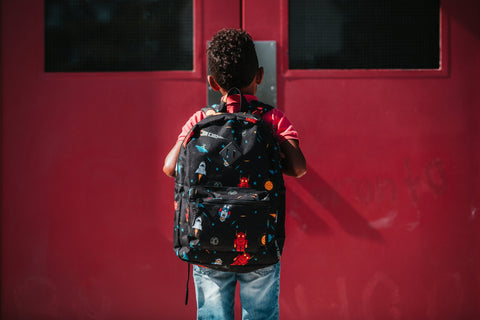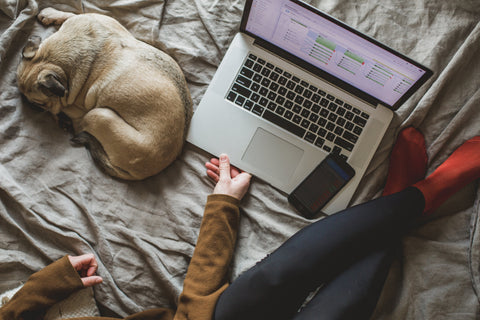We’ve come a long way since our first Covid-19 blog back in February. Our country, and the world, has been forever changed by events no one ever thought they’d ever see in our lifetimes. After a couple of weeks of watching wall-to-wall coverage of news about the virus, I made the conscious decision to simply stop watching regular TV. Hopefully you did the same as many mental health experts recommended not watching too much news.I still keep up on the goings on in my city just like many of you, but I limit myself to how much news I get. If you have younger children, they may have asked you a million and one questions by now about coronavirus and when they'll be able to go back to school and see their friends again.
According to many experts, we’re still several months away from a vaccine. Many different medicines are starting human trials to test their effectiveness against the virus, but much data will need to be collected and studied before a “cure” is finally found. For now, the best things to do are to wear a mask if you need to go out, stay at least six-feet away from people if you can, and wash your hands with warm water and soap for at least 20 seconds. The biggest one is simply staying home if you have no need to go out.
It’s safe to say most of us are “sick” and tired of practicing social distancing by staying home. Many people are discovering what cabin fever feels like first hand, myself included. But while it’s not a cure, social distancing and staying home are making a difference in combating covid-19. Staying home has allowed medical professionals to better treat people in hospitals and reduce the strain on our medical system when it comes to ventilators and protective equipment like masks.
As we approach what would be the summer break for many students, many people are wondering what will happen next when school starts again in the fall. Will states and school districts allow students to go back to school? Will parents be willing to send their children even if it is an option for them to return? How will not this school year affect your child’s academic progress? And worse yet, has the “Covid Slump” set back much of the hard work teachers and students have achieved?
Will this Semester Affect My Student Next Year?
Many major cities where the covid-19 virus was prevalent have begun to flatten the curve. Places such as New York City and Los Angeles have seen fewer new cases of the virus in hospitals and many people have recovered. What is important about these two cities is that they have the largest school districts in the country.
As you recall, many schools began shutting their doors before the bring break holiday was over, with many students and parents thinking they were simply getting an extra week of vacation. However, before spring break was over, it became clear school was not going to be back in session anytime soon. Teachers began scrambling to move their classrooms and lesson plans online.
While it is yet to be seen how effective online learning was during the spring semester, what is on the minds of many students and parents is this academic school year will reflect on their students going forward. For example in Texas, the standardized test known as the STAAR test, or the State of Texas Assessment of Academic Readiness, was canceled due to the virus and now many school districts have been left to decide if students can progress to the next grade level, graduate, or be held back. Across the country, many schools are wondering how to handle this same situation.
As the spring semester comes to an end, it is likely that school districts and their respective state education agencies will likely come to a conclusion as to how to proceed. It’s safe to say many school districts don’t have plans in place for a global pandemic and so they’re likely paying all of this by ear everyday as the national and local news changes. The best thing to do is to stay up to date with your child’s school on their various social media platforms and ask questions if you’re unsure.
Will There be a Fall Semester?
The simplest answer is: it’s too soon to tell. What is for certain is while the situation in the country is improving and governors are starting to relax certain restrictions, many parents are still on the fence about sending their children and teens back to school.
The main focus for many political leaders is how to get the economy back on its feet without putting people in danger of possible infection. However, many leaders are realizing the same thing that families already know. It’s impossible for some people to go back to work while their children are not in school or have no one to watch them while they’re at work.
School is an essential part of the economy not just because it educates future workers, but it also provides safety and security for children and teens while their parents are working. For low income families, school also sometimes provides the only meals children will eat the entire day. Unless your job was deemed essential, you likely haven’t been able to work unless your job allows you to work from home. For many parents who don’t have that option, going back to work with children in the house may just not be possible if those children are too young to be left alone. And, with many American struggling to pay their bills and buy groceries, affording the high cost of childcare is out of the question.
In order for the economy to get back to work, kids must first go back to school. But the challenge is making sure they all go back safely. The hardest part will be convincing families to let their children go back to school as currently, many parents, understandably, aren’t even planning to send them back to school in the fall.
And it’s not just elementary, middle, junior, and high schools weighing the possibility of having a 2020 school year with fewer students. Colleges and universities are also making decisions about when to hold classes. Some schools have already decided to open back up simply for financial reasons. Many college students are still waiting to hear if they will be able to return to their campuses or if they’ll have to continue distance learning.
Will Kids be Safe When They Go Back to School?
Ask any parent with a young child about keeping their kids germ and virus free and they’ll tell you that’s a losing battle. Younger kids seem to always get sick and it’s actually very important that they do. The more exposure young kids get to things like the common cold and the flu, the stronger their immune system becomes in fighting sickness later on.
But colds and the flu aren’t as worrisome as something like the covid-19 virus. And as those same parents will tell you, kids are experts at passing along germs and viruses to each other. Trying to tell kids to practice “social distancing” while they’re in school and they haven’t seen their friends in months is likely not going to work for very long. Though in the early stages of studying the virus it was thought that children weren’t likely to spread the virus, new findings are proving otherwise, but more testing and research needs to be done to confirm if this is true.
The other factor to consider is the state of many classroom sizes in American schools. Classrooms now can have up to thirty or more students at one time. It would be practically impossible to have any kind of social distancing in a classroom packed with students. Worse yet, a teacher would have to sanitize every single table, desk, and chair after every school day or class period to make sure the next student isn’t exposed to any viruses from the previous class.
Imagine a high school with packed hallways and teens who refuse to wear masks because they’re too hot or uncomfortable. Cafeterias packed with students all in close proximity to each other and touching the same surfaces. These are the conditions teachers, administrators, and school districts must consider before they make a final decision on whether or not students should be allowed to return to school normally.
If and when they do make those decisions and students can return to school, safety is likely to be the highest priority for both students and faculty. While it may be virtually impossible to keep every surface in a school clean, schools will absolutely try their best. But nothing beats good, old fashioned common sense when it comes to staying healthy. This means washing hands regularly, avoiding social contact with others as much as possible, and avoiding touching your face or eyes with unclean hands. And of course, the most important of all: if you feel sick, stay home. But as we’ve all learned in the last few months, asymptomatic people will never know they’ve been infected and are passing on the virus to others.
The Bottom Line? Use Your Best Judgement
The best possible way to judge what is best for your child is to use your best judgement and speak to your family doctor. Most major cities and towns offer a daily report on the current infection numbers and other information. By the time we get to the start of the next school year, conditions may have dramatically improved and you might feel a little better about letting your kids return to a normal routine. There may even be a potential vaccine that at least prevents people from getting the virus. Then again, you might not and don’t feel the risk is worth it to send them back right away. The choice is ultimately up to you.
It’s important to remember that even though summer may be coming up soon and school will be officially over, many kids have been feeling as though school has been over for a while. Many have probably disregarded their school work for video games, social media, and streaming services. This educational neglect can come back and haunt them once they are finally able to return to school and get back into the routine of learning for 8 hours a day.
The “Covid Slump” will hurt many students who already have difficulties learning and retaining information. And since traveling may be out of the question for a while, a staycation and encouraging your kids to read more might not be such a bad idea if they’re going to have to stay home anyway.




Comments (0)
There are no comments for this article. Be the first one to leave a message!